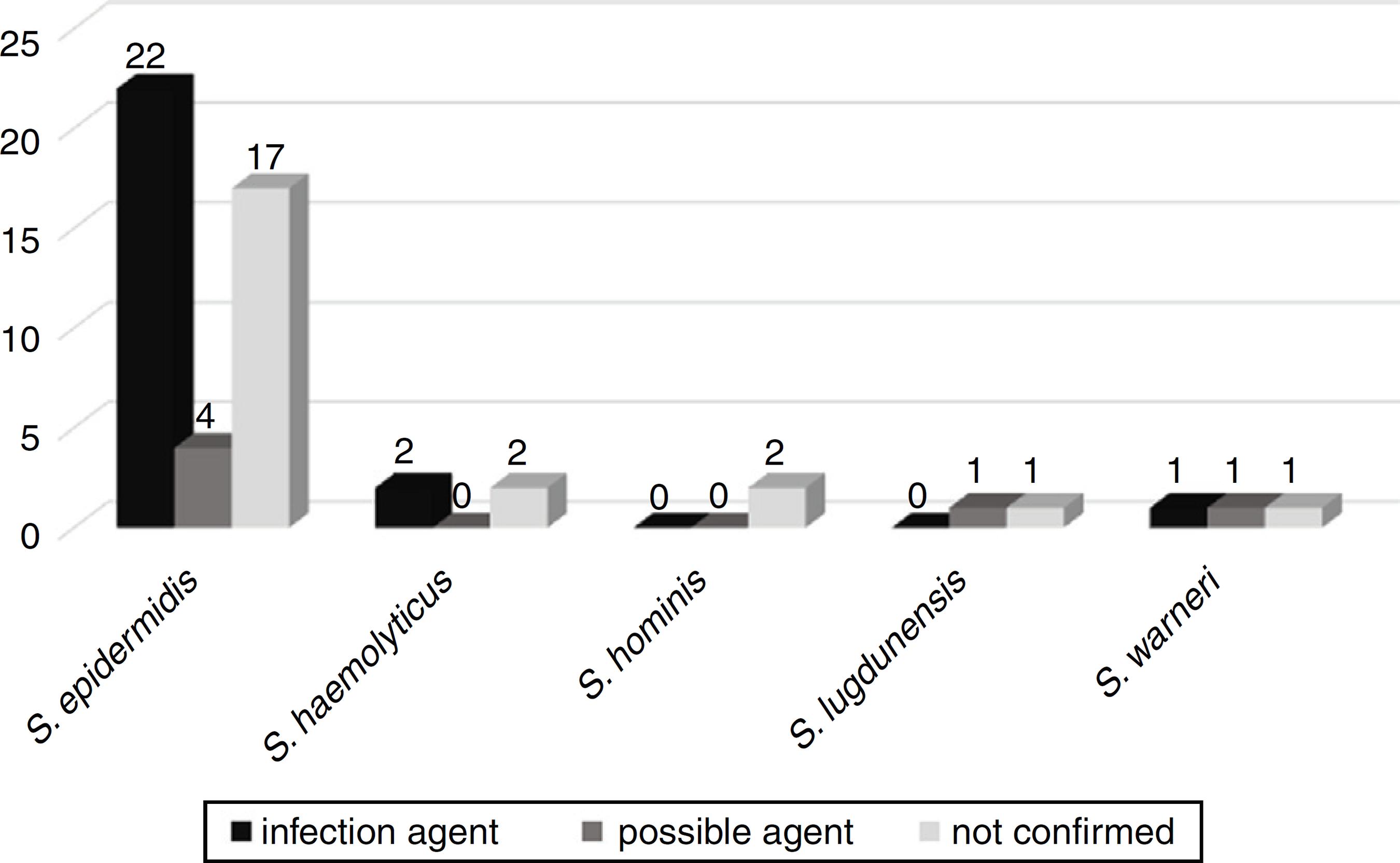ABSTRACT
The increasing rates of nosocomial infection associated with coagulase-negative staphylococci (CoNS) were the rationale for this study, aiming to categorize oxacillin-resistant CoNS species recovered from blood culture specimens of inpatients at the UNESP Hospital das Clínicas in Botucatu, Brazil, over a 20-year period, and determine their sensitivity to other antimicrobial agents. The mecA gene was detected in 222 (74%) CoNS samples, and the four types of staphylococcal chromosomal cassette mec (SCCmec) were characterized in 19.4%, 3.6%, 54.5%, and 14.4% of specimens, respectively, for types I, II, III, and IV. Minimal inhibitory concentration (MIC) values to inhibit 50% (MIC50) and 90% (MIC90) of specimens were, respectively, 2 and >256 µL/mL for oxacillin, 1.5 and 2 µL/mL for vancomycin, 0.25 and 0.5 µL/mL for linezolid, 0.094 and 0.19 µL/mL for daptomycin, 0.19 and 0.5 µL/mL for quinupristin/dalfopristin, and 0.125 and 0.38 µL/mL for tigecycline. Resistance to oxacillin and tigecycline and intermediate resistance to quinupristin/dalfopristin were observed. Eight (2.7%) of all 300 CoNS specimens studied showed reduced susceptibility to vancomycin. Results from this study show high resistance rates of CoNS to antimicrobial agents, reflecting the necessity of using these drugs judiciously and controlling nosocomial dissemination of these pathogens.
Keywords:
CoNS; MIC; Quinupristin/dalfopristin; SCCmec; Vancomycin; Tigecycline; Staphylococcus



